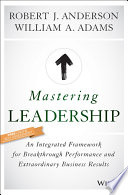

Leadership is often misunderstood as merely a position of authority. In reality, it is about influence, vision, and the ability to inspire others. The essence of leadership lies in the capacity to create a shared vision that resonates with individuals and teams. Effective leaders understand that their role is to empower others, fostering an environment where creativity and collaboration thrive. They must also be adaptable, as the landscape of leadership is constantly evolving in response to changes in society, technology, and organizational dynamics. This adaptability allows leaders to remain relevant and effective in guiding their teams toward achieving common goals.
Continue readingEmotional intelligence (EI) is a cornerstone of effective leadership. Leaders with high emotional intelligence can recognize their own emotions and the emotions of others, allowing them to navigate complex interpersonal dynamics. This skill helps leaders to build strong relationships, manage conflicts, and foster a culture of trust and respect within their teams. The book emphasizes that emotional intelligence is not just a personal trait but a skill that can be developed through self-awareness, empathy, and active listening. By honing these skills, leaders can create a supportive environment where team members feel valued and motivated to contribute their best efforts.
Continue readingCommunication is a fundamental aspect of leadership. Mastering the art of communication involves not only conveying messages clearly and effectively but also being an active listener. The book highlights various communication styles and the importance of adapting one's approach to suit different audiences. Leaders must be able to articulate their vision, provide constructive feedback, and encourage open dialogue within their teams. Effective communication fosters transparency and helps to align team members with organizational goals. Additionally, it plays a crucial role in building relationships and cultivating a culture of collaboration and innovation.
Continue readingAccountability is essential for high-performing teams. Leaders must establish a culture where team members take ownership of their responsibilities and are held accountable for their actions. The book discusses strategies for fostering accountability, such as setting clear expectations, providing regular feedback, and recognizing achievements. By creating an environment where accountability is valued, leaders can enhance team performance and drive results. This culture also encourages continuous learning and improvement, as individuals are motivated to reflect on their performance and seek opportunities for growth.
Continue readingChange is inevitable in any organization, and effective leaders must be adept at managing it. The book outlines a framework for leading change that includes understanding the need for change, communicating the vision, and engaging stakeholders throughout the process. Leaders must also be resilient and open to feedback, as change initiatives often encounter resistance. By fostering a culture that embraces change, leaders can guide their organizations through transitions successfully. This ability to lead change not only ensures organizational survival but also positions the organization for future growth and innovation.
Continue readingOne of the key responsibilities of leaders is to develop the next generation of leaders. The book emphasizes the importance of mentorship and coaching in nurturing talent within an organization. Leaders should actively seek opportunities to identify potential leaders and provide them with the resources and support needed to grow. This includes offering training, challenging assignments, and constructive feedback. By investing in the development of future leaders, organizations can build a strong leadership pipeline that ensures continuity and resilience in the face of challenges.
Continue readingA clear vision and strategic direction are vital for effective leadership. Leaders must articulate a compelling vision that inspires and motivates their teams. The book discusses the process of developing a strategic plan that aligns with the organization's mission and values. This involves analyzing the external environment, setting goals, and identifying key performance indicators. Leaders must also communicate this vision consistently and ensure that all team members understand their role in achieving it. A well-defined strategy not only provides a roadmap for success but also helps to align resources and efforts toward common objectives.
Continue reading